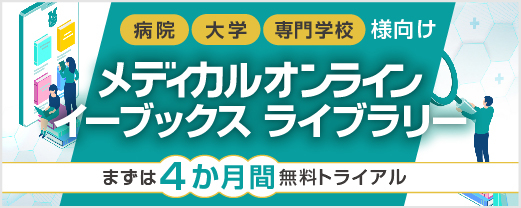アブストラクト
| Title | 引き込み程度が大きな腱板断裂に対する外側修復を追加したスーチャーブリッジ法 |
|---|---|
| Subtitle | 第116回東北整形災害外科学会 (2019年6月 当番校・岩手医科大学) |
| Authors | 佐藤英樹, 小川哲也, 荒木亮, 吉川孔明, 近江洋嗣, 富田卓, 伊藤淳二 |
| Authors (kana) | |
| Organization | 青森県立中央病院 整形外科 |
| Journal | 東北整形災害外科学会雑誌 |
| Volume | 63 |
| Number | 1 |
| Page | 4-7 |
| Year/Month | 2020 / 6 |
| Article | 報告 |
| Publisher | 東北整形災害外科学会 |
| Abstract | 「はじめに」腱板断裂修復術の術後再断裂の原因としては高齢, 喫煙歴, 糖尿病, サイズの大きな断裂, 引き込み程度が大きな断裂, 断裂腱板筋の高度な脂肪浸潤や筋萎縮, 過剰な術後リハビリテーションなどが報告されている. 引き込み程度が大きな断裂では解剖学的 footprint への一次修復は困難な場合が多く, 修復部位の内方化などが報告されている. 以前報告したBoileau分類stage III以上の引き込み程度が大きな断裂に対するミニオープン法, 単層法, 重層法, スーチャーブリッジ(SB)法などの術式では, 腱板筋の脂肪浸潤が高度な断裂では低度な断裂と比較して部分修復術を選択することが多く(45% : 10%), 完全修復ができた場合でも再断裂が多く(36% : 28%), 部分修復術と再断裂を除いた一次修復成功率は低い傾向(35% : 65%)であった. |
| Practice | 臨床医学:外科系 |
| Keywords | rotator cuff tear (腱板断裂), suture-bridge repair (スーチャーブリッジ法), tear edge fixation (外側修復追加) |
- 全文ダウンロード: 従量制、基本料金制の方共に770円(税込) です。
参考文献
- 1) Boileau P, Brassart N, Watkinson DJ, et al. Arthroscopic repair of full-thickness tears of the supraspinatus: does the tendon really heal? J Bone Joint Surg Am 2005; 87: 1229-40.
- 2) Cho NS, Yi JW, Lee BG, et al. Retear pattern after arthroscopic rotator cuff repair: single-row versus suture bridge technique. Am J Sports Med 2010; 38: 664-71.
- 3) Fuchs B, Weishaupt D, Zanetti M, et al. Fatty degeneration of the muscles of the rotator cuff: Assessment by computed tomography versus magnetic resonance imaging. J Shoulder Elbow Surg 1999; 8: 599-605.
- 4) George MS, Khazzam M. Current concepts review: revision rotator cuff repair. J Shoulder Elbow Surg 2012; 21: 431-40.
- 5) Hawi N, Dratzidis A, Kaemer M, et al. Biomechanical evaluation of the simple cinch stitch for arthroscopic rotator cuff repair. Clin Biomech 2016; 36: 21-5.
残りの10件を表示する
- 6) Honda H, Gotoh M, Mitsui Y, et al. Clinical structural outcomes after arthroscopic rotator cuff repair: a comparison between suture bridge techniques with or with medial knot tying. J Orthop Surg Res 2018; 22: 297.
- 7) Kim KC, Rhee KJ, Shin HD. Deformity associated with the suture-bridge technique for full-thickness rotator cuff tears. Arthroscopy 2008; 24 :1251-7.
- 8) Kim YK, Jung KH, Won JS, et al. Medialized repair for retracted rotator cuff tears. J Shoulder Elbow Surg 2017; 26: 1432-40.
- 9) Nagamoto H, Yamamoto N, Shiota Y, et al. Transosseous-equivalent repair with and without medial row suture tying: a cadaveric study of infraspinatus tendon strain measurement. JSES Open Access 2017; 28: 104-8.
- 10) Park MC, Elattrarche NS, Ahmad CS, et al. Transosseous-equivalent rotator cuff repair technique. Arthroscopy 2006; 22: 1360. e1-5.
- 11) Readler LH, Byram IR, Luchetti TJ, et al. Influence of rotator cuff tear size and repair technique on the creation and management of dog war deformities in a transosseous-equivalent rotator cuff repair model. Orthop J Sports Med 2014; 2: 2325967114529247.
- 12) Roghani R, Snir N, Wolfson TS, et al. The importance of tear edge fixation in modified transosseous-equivalent rotator cuff repair: a biomechanical study. Bull Hosp Jt Dis 2015; 73: 10-7.
- 13) 佐藤英樹. 腱板大断裂に対する Knotless suture-bridge法とKnotless double-row suture bridge法の比較. 肩関節 2018; 42: 470-3.
- 14) 佐藤英樹, 金子 翔, 原田義史ほか. 腱板広範囲断裂に対する手術成績. 東北整災誌 2017; 60: 6-10.
- 15) Sugaya H, Maeda K, Matsuki K, et al. Repair integrity and functional outcome after double-row rotator cuff repair: a prospective outcome study. J Bone Joint Surg Am 2007; 89: 953-60.


